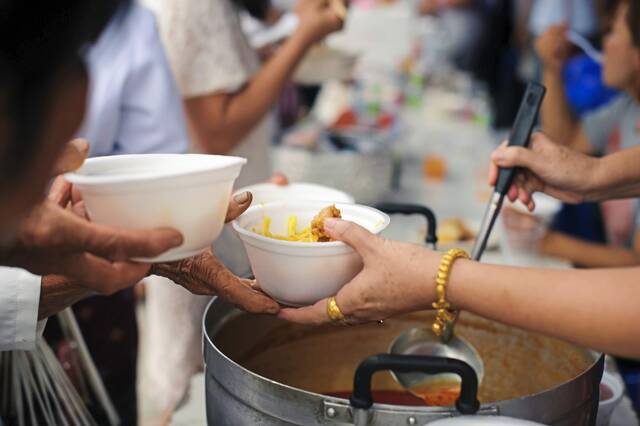https://triblive.com/local/food-podcast-why-is-the-black-community-experiencing-higher-rates-of-food-insecurity-in-the-three-rivers-region/
Food Podcast: Why is the Black community experiencing higher rates of food insecurity in the Pittsburgh region?

On this week’s episode of the Food Podcast presented by Clearview Federal Credit Union on the TribLIVE podcast network, Greater Pittsburgh Community Food Bank celebrates Black History Month by learning more about food insecurity and race in the Pittsburgh region.
“African Americans are three times more likely to experience food insecurity than their white counterparts,” said Godfrey Bethea, the Food Bank’s Vice President of Equity, People and Culture.
The food insecurity rate for African Americans is 26.1% while the food insecurity rate for Hispanics/Latino Americans is 23.7%. Bethea says those percentages rise even more for African American single mothers who see a food insecurity rate of 33.3%. Other communities of color see this too, with a food insecurity rate of 34.3% for Latina single and 37.1% for indigenous single mothers.
“It underlines that there are institutional issues that need to be addressed. We need to know how to address it,” Bethea said. “We need to be able to identify the root cause. It’s not just providing food, it’s understanding the root cause of the food insecurity.”
Bethea says when you look at our region’s history, systemic racism is a big factor in why communities of color lack certain resources, despite having high populations.
You live in an affluent neighborhood you tend to have more options of accessing high quality and healthy food options. For example, you have:
Grocery stores, cafes, markets, malls, bakeries, restaurants Shopping outlets, banks, large chain operations, employment options Bus lines, transportation options, maintained infrastructure Hospitals, medical centers and treatment facilities Tax dollars and resources are brought in and maintainedYou live in segregated neighborhoods, sometime hyper-segregated neighborhoods where the resources are driven out of the area, you see:
Convenience stores, corner stores, fast food chains Check cashing stores, dollar stores, limited employment options Group health carriers are limited, bus lines are cut, infrastructure is poorly maintained You have a larger dense population living off of scarce resources and have anywhere between no to limited power to drive needed resources to revitalize the communityBethea says it’s important for food banks to be champions for food justice, ensuring that where, what, and how food is grown and produced, transported and distributed, and accessed and eaten are shared fairly.
He says the first step is learning the history and listening to the needs of each community, and says Black History month is a great opportunity to learn about food insecurity and race in our local area and educate yourself of stories told about the Black experience.
To learn more about the Food Bank’s mission, find food resources or donate, visit pittsburghfoodbank.org.
Listen: Why is the Black community experiencing higher rates of food insecurity?
Copyright ©2025— Trib Total Media, LLC (TribLIVE.com)
